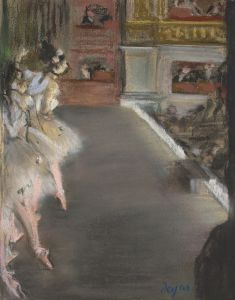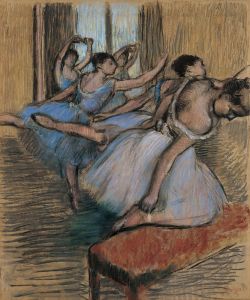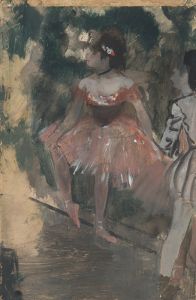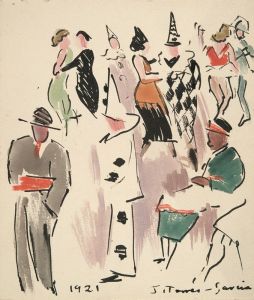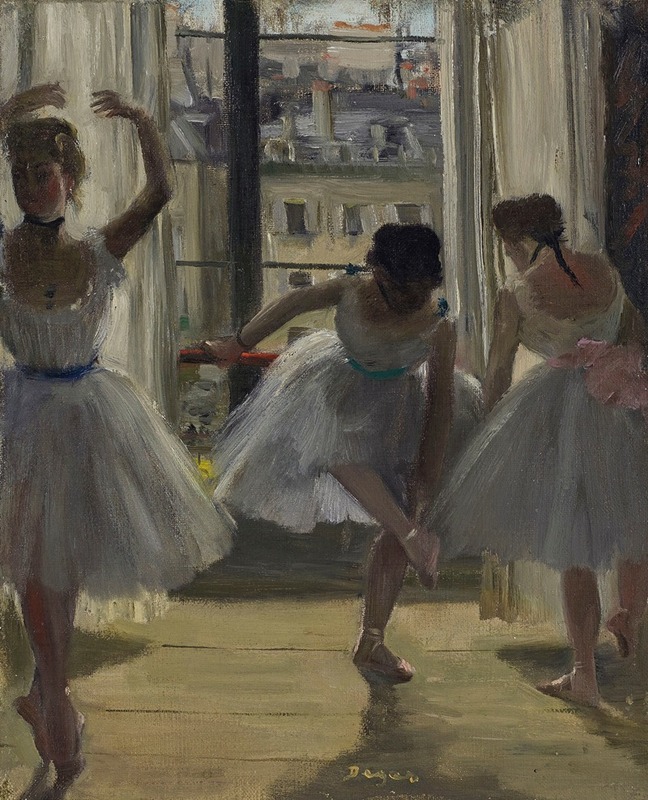
Danseuses dans une salle d’exercice
A hand-painted replica of Edgar Degas’s masterpiece Danseuses dans une salle d’exercice, meticulously crafted by professional artists to capture the true essence of the original. Each piece is created with museum-quality canvas and rare mineral pigments, carefully painted by experienced artists with delicate brushstrokes and rich, layered colors to perfectly recreate the texture of the original artwork. Unlike machine-printed reproductions, this hand-painted version brings the painting to life, infused with the artist’s emotions and skill in every stroke. Whether for personal collection or home decoration, it instantly elevates the artistic atmosphere of any space.
Danseuses dans une salle d’exercice (English: Dancers in an Exercise Hall) is a painting by the French artist Edgar Degas, renowned for his depictions of ballet dancers and scenes from the Parisian ballet world. Created in the late 19th century, this work exemplifies Degas's fascination with movement, light, and the intimate, behind-the-scenes moments of dancers' lives. The painting is executed in oil on canvas, a medium Degas frequently used during this period of his career.
Degas's interest in ballet dancers began in the 1860s and became a central theme in his work. By the time Danseuses dans une salle d’exercice was created, Degas had developed a distinctive style that combined elements of Impressionism with his own meticulous approach to composition and form. While he is often associated with the Impressionist movement, Degas preferred to describe himself as a realist, focusing on the structure and discipline of his subjects rather than the fleeting effects of light and atmosphere.
The painting depicts a group of young dancers rehearsing in a practice room, a common setting in Degas's oeuvre. The composition captures the dancers in various poses, some stretching or adjusting their positions, while others appear to be resting. Degas's attention to detail is evident in the way he portrays the dancers' postures, the folds of their costumes, and the interplay of light and shadow within the room. The scene conveys a sense of quiet concentration and the physical rigor of ballet training.
Degas often sketched and observed dancers in person, attending rehearsals and performances at the Paris Opéra. His works reflect his deep understanding of the discipline and artistry of ballet, as well as his ability to capture the human form in motion. In Danseuses dans une salle d’exercice, the artist's use of perspective and cropping creates a dynamic composition that draws the viewer into the intimate world of the dancers.
The painting is part of Degas's broader exploration of modern life in 19th-century Paris, a theme that runs throughout his body of work. His depictions of dancers, laundresses, and other working-class subjects offer a glimpse into the everyday lives of people in the city, rendered with empathy and precision.
Today, Danseuses dans une salle d’exercice is celebrated as a quintessential example of Degas's mastery in portraying the human figure and his innovative approach to composition. The painting is held in a private collection, and its exact date of creation is not definitively documented, though it is generally attributed to the 1870s or 1880s, a period when Degas produced many of his iconic ballet scenes.







